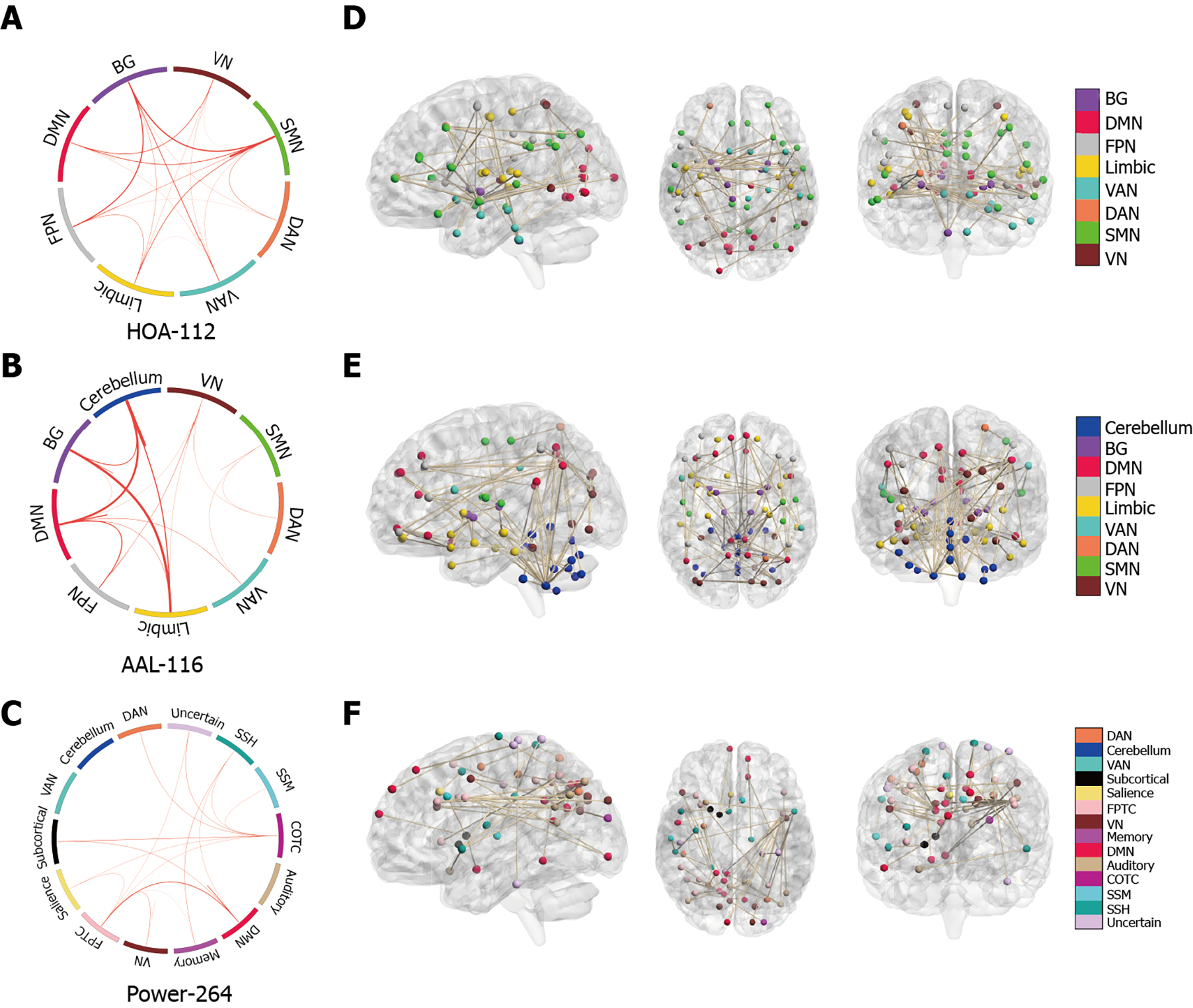Copyright
©The Author(s) 2022.
World J Diabetes. Feb 15, 2022; 13(2): 110-125
Published online Feb 15, 2022. doi: 10.4239/wjd.v13.i2.110
Published online Feb 15, 2022. doi: 10.4239/wjd.v13.i2.110
Figure 5 Functional connections classifying patients with type 2 diabetes mellitus with the present of mild cognitive impairment and patients with type 2 diabetes mellitus with the absence of mild cognitive impairment based on three different atlas.
A-C: On the far left of the image above, edges were classified as macroscale brain regions and were visualized using circle plots, in which nodes are grouped based on anatomic location. The resting-state network (RSN) of brain based on three atlas is represented by a rectangle on the circumference of the big circle. The lines connecting two rectangles represent the connections between the corresponding one or two RSN, including inter-network connections and intra-network connections. The thickness of the line represents the weight (i.e., support vector classification weight) of the connection. The thicker the line, the larger the weight. This visualization was created using Circos (http://circos.ca/); D-F: On the right of the image above, the same edges are visualized on brains. The lines represent edges connecting the spheres, which represent nodes. A legend indicating the approximate anatomic ‘lobe’ is shown in the far right side of picture. VN: Visual network; SMN: Sensory-motor network; DAN: Dorsal attention network; VAN: Ventral attention network; Limbic: Limbic system; FPN: Fronto-parietal network; DMN: Default mode network; BG: Basal ganglia; SSH: Sensory Somatomotor hand; SSM: Sensory somatomotor mouth; COTC: Cingulo-opercular task control; Memory: Memory retrieval; FPTC: Fronto-parietal task control.
- Citation: Shi AP, Yu Y, Hu B, Li YT, Wang W, Cui GB. Large-scale functional connectivity predicts cognitive impairment related to type 2 diabetes mellitus. World J Diabetes 2022; 13(2): 110-125
- URL: https://www.wjgnet.com/1948-9358/full/v13/i2/110.htm
- DOI: https://dx.doi.org/10.4239/wjd.v13.i2.110









